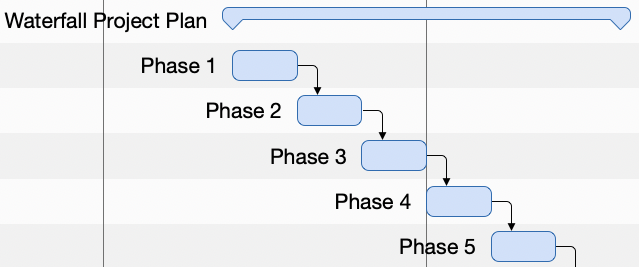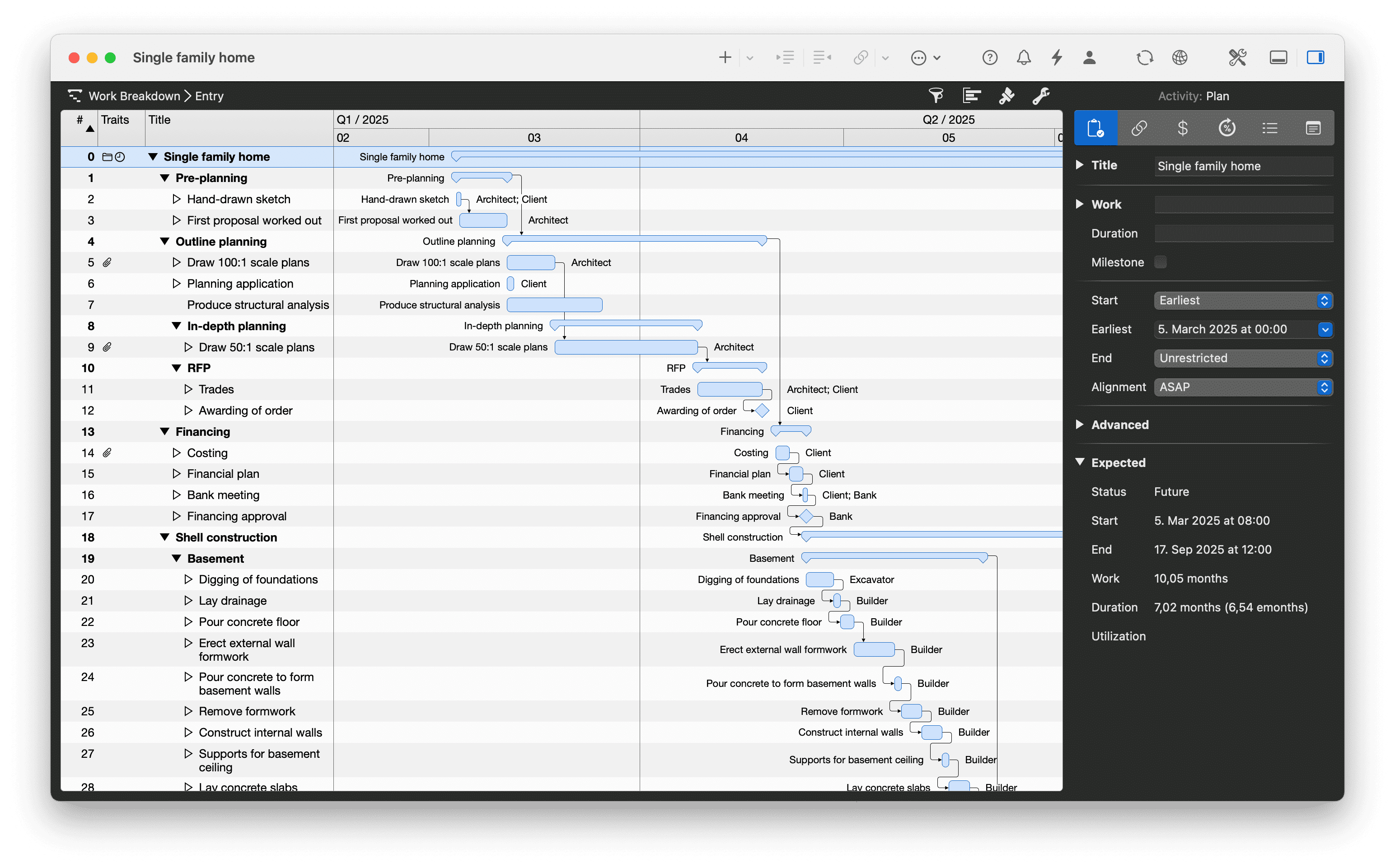Project Management with a Bit of Magic
Plan, manage, and deliver projects efficiently. Merlin Project for macOS and iOS

In project management, some strange terms appear when you are looking for a methodology suitable for your team: critical path, Scrum, PMBOK, Six Sigma etc. Besides all these terms, you have certainly heard of the waterfall project management method.
In this guide you will learn how the waterfall method uses a sequential process to simplify project management and how you can implement aspects of this method in your own work.
What Is The Waterfall Model in Project Management?
Project Phases in The Waterfall Model - An Example
Advantages and Disadvantages of The Waterfall Model
For Which Projects is The Waterfall Model Suitable?
Agile Waterfall Is No Swearword - Thanks to Merlin Project
The basic concept behind the waterfall model is made clear by its name. Simply put, the waterfall methodology is a sequential, linear process of project management. It consists of several independent phases. A project runs one after the other, each completed phase initiates a new phase.
The waterfall model originates from the construction and production process, where highly structured procedures must be followed, as late changes are expensive or even impossible. This approach focuses on producing the best possible end product with little flexibility for changes when the product is finished.
A house construction is a practical example of such a waterfall model. The floors must be built one after the other - first the basement, then the floors and finally the roof. You cannot cover the roof without first building the house yourself.

In the waterfall model, the individual phases of a development process follow each other in a cascade. Each phase concludes with an intermediate result (milestone) - for example with a catalogue of requirements in the form of a specification sheet, with the specification of a software architecture or with an application in alpha or beta stage.
As modern technology today enables us to use more flexible methods, other, more agile methods are now widely used for the development of software and other products, but the waterfall method still exerts a great influence.
Waterfall models are mainly used for projects where requirements and processes can be precisely described in the planning phase and where it can be assumed that the assumptions will change only slightly during the course of the project. Strictly linear process models are therefore suitable primarily for small, simple and clearly structured software projects.
If you suspect that requirements might change during production or that a revision is necessary, an agile approach is more suitable for your project. Realistically, most software developments fall into this category. Late stage testing makes any revision a serious undertaking. In fact, staunch supporters of the waterfall system would argue that a need for revision means that the requirements for the product were not clear and the project must therefore return to the first phase.
Project management couldn't be simpler than in the Kanban view : Collect your tasks in the left column as cards. As the project progresses, move them to the right until they finally end up in the Completed column. If you switch between the kanban board and the work breakdown view Merlin Project, you experience the magic effect: The Gantt bars fill automatically. This is hybrid project management.
Your ideas, our magic – make projects easy! Test now 30 days for free.
